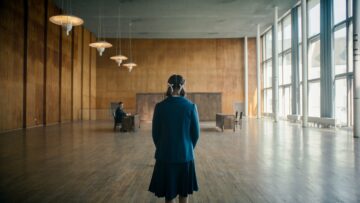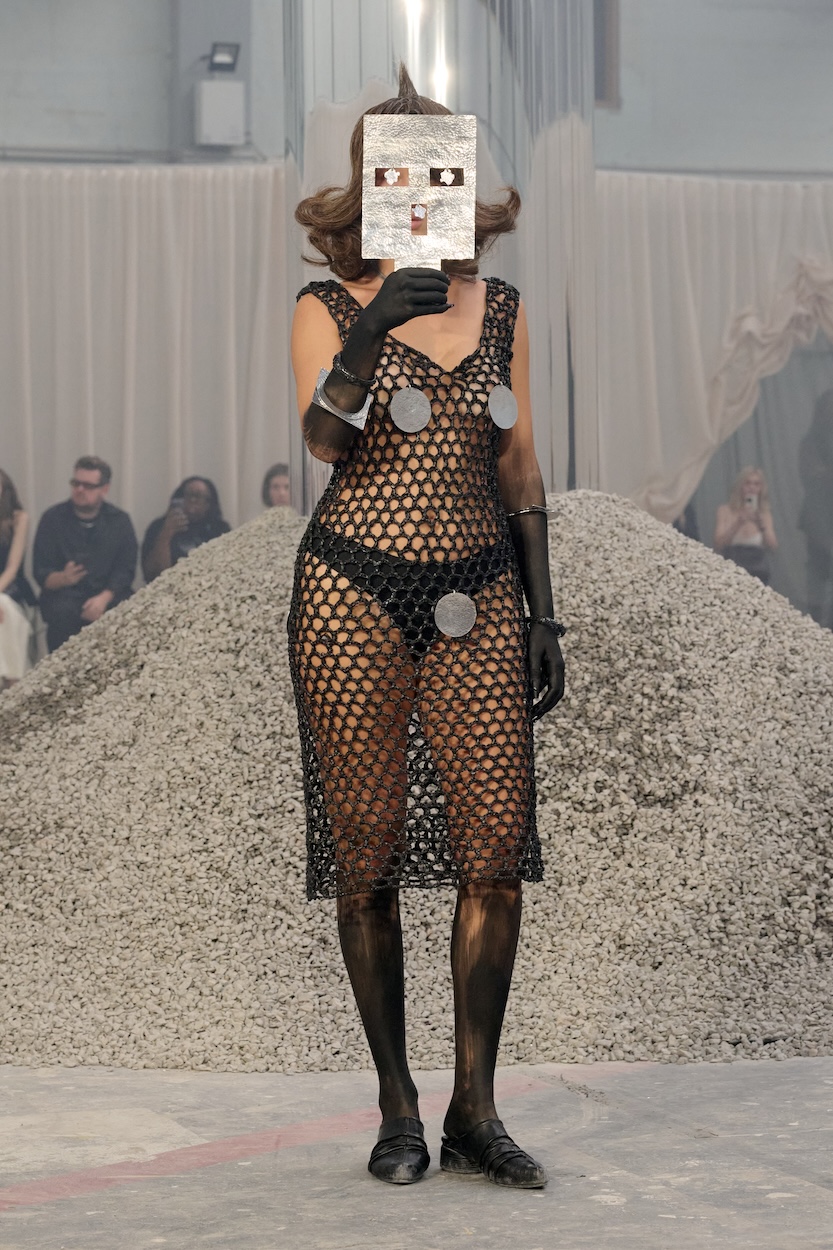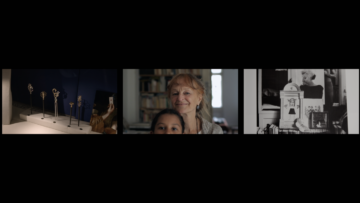
TO WATCH: “KARLA” BY CHRISTINA TOURNATZÉS
„My mom. Just once, she came close to believing me.“




IAMISIGO’s SS26 collection Dual Mandate reclaims a colonial phrase, transforming it into a personal philosophy: self-preservation and perception, protection and openness to be adorned and aware. It sees the body as a bio-electric landscape of body, mind, spirit and emotion, tuned through grounding fibres like cotton, sisal, raffia, and jute and radiant metals, glass, and plastics.
Using ancestral techniques like hand-weaving, chainmail forging, glass blowing, and fibre knotting, each piece carries dual energies: hardness and tenderness, stillness and motion, presence and prayer. Dual Mandate is a quiet revolution in perception, dressing for both the world we walk through and the one vibrating just beyond it.
We had a conversation with IAMISIGO’s creative director, Bubu Ogisi, following her presentation at Copenhagen Fashion Week, this year’s Zalando Visionary Award winner, to discuss her inspiration, creative process and learn more about her vision.
This wasn’t about chasing a debut for it’s own sake, it was about arriving when the story, the work and the community were ready to meet the moment.

Bubu Ogisi: A mix of grounded gratitude and quiet exhilaration. This wasn’t about chasing a debut for it’s own sake, it was about arriving when the story, the work and the community were ready to meet the moment. Standing here under the Zalando Visionary Award, recognized for design excellence, social impact, and innovation, feels deeply affirming. It means the work of preserving ancient technologies and artisanal craft is resonating beyond our immediate cultural context.
Yes, just before the final look, there was a pause where the soundtrack kind of fades out, everything went silent like the room held it’s breath. That was a moment where I became very aware of everyone who had contributed to IAMISIGO. All the fellow creatives, artisans, our friends and community. It felt like the space was holding the energy of the ancestors and communities whose stories and skills had carried us here.
SS26 draws from our archive of oral histories, ancient weaving, dyeing techniques and ritual adornment practices. I focused on elements that reflect cultural resilience, garments as vessels carrying knowledge across generations. These were paired with design interventions that honor the original craft, while introducing new forms and functions, keeping the tradition alive in a contemporary landscape.
It felt like the space was holding the energy of the ancestors and communities whose stories and skills had carried us here.
It’s the meeting point of protection and possibility. Structure is our armor, built through centuries of refined technique; fluidity is the openness to innovation and reinterpretation. That tension is where ancient craft meets modern design thinking.
I see garments as containers for Time, Memory and Movement. This season, that meant constructing silhouettes using materials that carry spiritual and tactile resonance, woven cotton, raffia, sisal, recycled hand crafted metal work, recycled plastics, while engineering them in ways that allow freedom of motion. It’s about building forms that hold cultural energy yet adapt to new contexts.
Every texture came from a collaboration rooted in trust and shared purpose. These are not outsourced “techniques” but living traditions we are committed to preserving. Our work together is as much about economic empowerment and sustaining livelihoods as it is about creating beauty.
I see garments as containers for Time, Memory and Movement.

We began with soundscapes from artisan workspaces, loom rhythms, dye vat splashes, bead taps, milliners, so the audience stepped into our ecosystem before the first look appeared. The model pacing echoed processional movement, transforming the runway into a ritual space where tradition and innovation could coexist.
They’re the blueprint. The cuts, negative spaces and layering draw on inherited knowledge systems that predate written records. By translating these into wearable forms, we keep those teachings alive, not in a museum but in motion, on bodies, in daily life.
It’s essential. Those traces are a form of authorship, they connect the wearer directly to the maker and the maker to an unbroken lineage of craft. In an industrialized system, those marks would be erased; we choose to amplify them.
For me, sustainability means the continuity of cultural ecosystems, passing on techniques, ensuring artisans can thrive, designing pieces that retain relevance and integrity over decades. It’s as much about social impact as it is about environmental responsibility.
By starting from the truth. When a story is deeply rooted, authentic enough to be specific, yet open enough for others to find connection through shared human themes like protection, celebration, and memory. For example, the shape of the runway for our show was a portal, linking worlds together – ancient and modern- telling stories that have passed through time.
Tradition is a living organism, it’s not frozen in time.
Tradition is a living organism, it’s not frozen in time. I listen to the craft: sometimes it demands absolute fidelity, other times it invites reinterpretation. That interplay is where innovation thrives without erasing the origin.
The award validated our belief that preserving ancient technologies and artisanal craft can be an engine for design innovation and social change. It gave us resources to invest in our artisan networks and the freedom to experiment without compromising cultural integrity.
We hope to be able to continue pushing African heritage techniques into new silhouettes and contexts.

Yes, but Beyond financial support, it’s opened a global platform to tell our story, connected us to collaborators across disciplines and shown that innovation rooted in heritage has a powerful place in contemporary fashion.
We hope to be able to continue pushing African heritage techniques into new silhouettes and contexts. To continue deepening economic empowerment for artisan communities across all borders and to evolve ancient technologies into future-facing solutions, a kind of cultural preservation through reinvention.

„My mom. Just once, she came close to believing me.“

"I always just wanted to photograph what I love."

Step into Gia Coppola’s “Edie” — a Hollywood that is intimate, playful, and raw